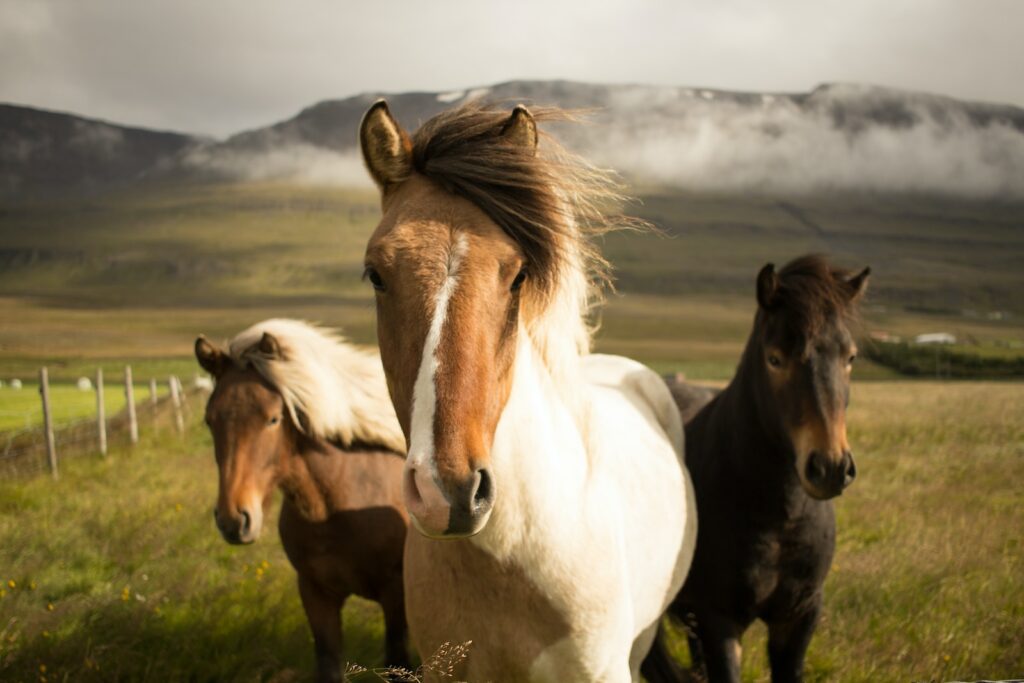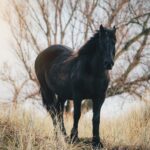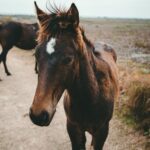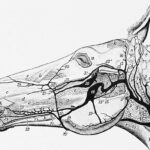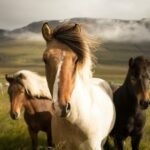Horses have been domesticated and selectively bred for thousands of years, resulting in over 300 distinct horse breeds worldwide. While all horses share common traits, each breed has unique physical characteristics and temperaments that make them suitable for specific purposes. Understanding the origins, traits, care needs, and purposes of different horse breeds is essential for both equine professionals and casual riders. This comprehensive guide will explore the fascinating history, genetics, uses, and characteristics of various horse breeds around the world.
Introduction
Horse breeds refer to populations of horses that share consistent physical traits and temperaments due to selective breeding over many generations. Unlike dog breeds, which emphasize appearance, horse breeds are distinguished by their physical abilities and suitability for specific tasks. For instance, the Arabian is known for its speed and endurance while the Belgian Draft is prized for its muscular build and immense strength for pulling heavy loads.
The wide variety of horse breeds is a testament to the adaptive nature of equines and their versatility across countless roles and industries. From racing Thoroughbreds to show jumpers, cavalry mounts to therapy horses, specialized breeds excel in specific disciplines. However, the diversity of equine breeds is under threat today from crossbreeding, mechanization in agriculture, and declining interest in equestrianism. Preserving rare and heritage breeds remains an important mission.
This comprehensive guide will cover the origins of modern horse breeds, their physical and temperamental distinctions, breed-specific care and handling, the genetics and ethics of horse breeding, and considerations for buying and selling horses. Whether you’re interested in a light riding horse or a heavyweight draft breed, want to know the best mounts for cattle work or dressage, or are simply curious about the immense diversity across equine breeds, this guide covers it all. Let’s start from the beginning.
History and Evolution of Horse Breeds
Horses have been domesticated and selectively bred by humans for thousands of years, resulting in a diverse array of horse breeds that are adapted for different purposes across the globe. From their earliest domestication on the Eurasian steppes to the technologically advanced breeding programs of today, the relationship between horses and humans has influenced both species in profound ways. Understanding the origins and development of various horse breeds provides important insights into the coevolution of horses and human civilization.
The Early History of Horse Domestication
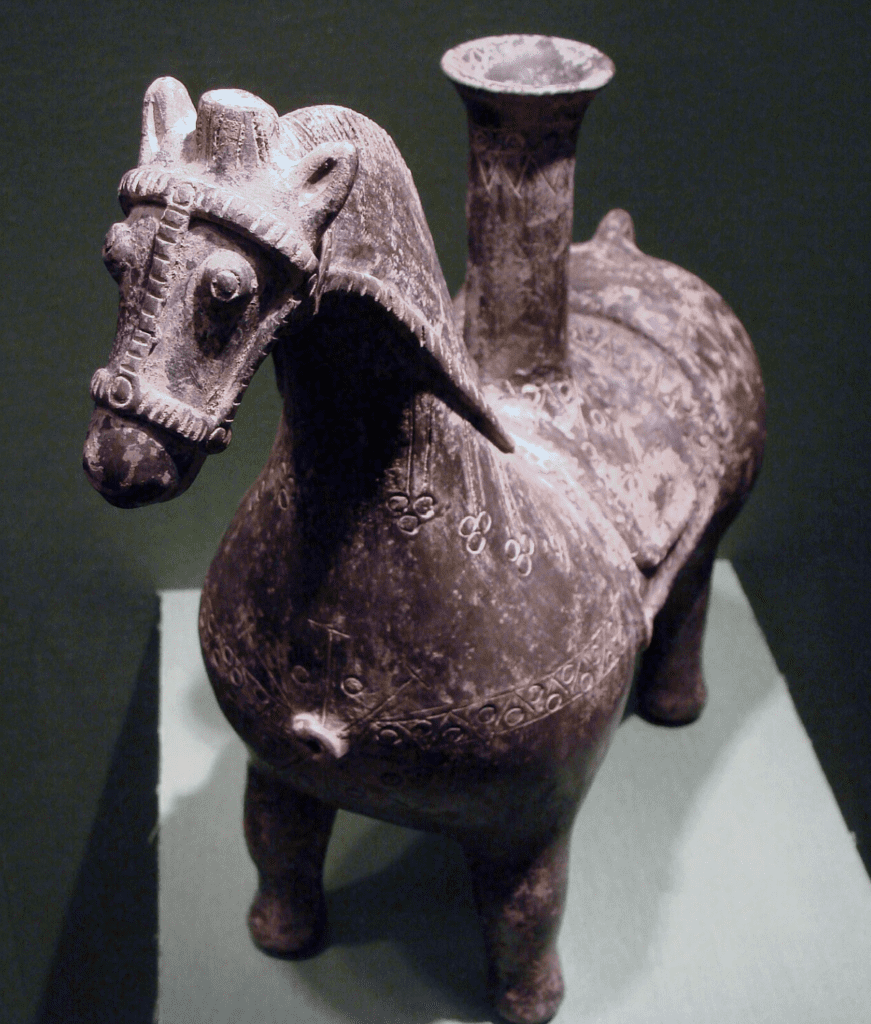
Archaeological evidence indicates that horses were first domesticated around 4000 BC in Central Asia, primarily in the region surrounding the Black and Caspian Seas. These early domesticated horses were smaller and stockier than most modern breeds, standing between 12 to 14 hands high. They were likely derived from wild horse populations such as the tarpan and Przewalski’s horse. Early domesticated horses were valued for their meat and milk, much like cattle, and they were ridden and used to pull sleds, wagons, and primitive plows. Horses transformed early societies by enabling increased mobility and new forms of warfare conducted from horseback with bows and spears.
From their cradle of domestication in Central Asia, horses spread across Eurasia and North Africa over the next several thousand years through trade, warfare, and migration. This gradual dissemination led to localized breeding of early domesticated horses in different regions, resulting in the emergence of distinct horse types adapted to various environments and human needs. For instance, in northern Europe, hearty forest horse breeds emerged, while Arabian horses developed in the arid Middle East, and Turkoman horses bred in central Turkey and Persia.
The Rise of Specialized Horse Breeds
Beginning around 700 AD, taller horses with more refinement began to be selectively bred, especially in Europe. These provided a foundation for many of the modern light riding horse breeds. In the Middle Ages, systematic breeding programs emerged across Europe, producing horses tailored specifically for warfare, transportation, and status. This led to the establishment of famous breed lineages like the Andalusian, Friesian, and ancestors of various draft horses. Extensive stud farms were developed to raise and train these horses, and breed registries and studbooks began tracking pedigrees.
Some pivotal foundation breeds that arose during the medieval era include:
- The Arabian horse, prized for its speed, endurance, intelligence, and refined beauty. Used as a foundation for many other breeds.
- The Akhal-Teke, known for its metallic sheen and athleticism. Bred in Turkmenistan.
- The Andalusian, a robust, powerful breed from the Iberian peninsula employed as a warhorse and for dressage.
- Friesian horses, a Dutch breed recognized for its mane and feathering. Used for both riding and draft work.
- Ancestors of European draft horses such as Percheron, Belgian, and Clydesdale breeds.
Beginning around the 17th century, the Thoroughbred horse breed was developed in England by crossing Arabian stallions with local British mares. Thoroughbreds were bred exclusively for racing, contributing both speed and endurance. They became the foundation for many modern breeds.
By the 19th century, systematic breeding had firmly established most of the major modern horse breeds. The advent of large industrialized stud farms and breed registries combined with a scientific understanding of animal breeding enabled breeders to solidify specific traits within defined breeds. Breed standards and pedigree documentation became increasingly important.
| Primary use | Pct. | Std. error | Pct. | Std. error | Pct. | Std. error | ||||||
|---|---|---|---|---|---|---|---|---|---|---|---|---|
| Pleasure | 54.4 | (1.7) | 33.2 | (2.4) | 30.5 | (2.5) | 47.2 | (1.3) | ||||
| Lessons/school | 1.6 | (0.4) | 4.2 | (0.9) | 11.1 | (1.7) | 3.2 | (0.4) | ||||
| Showing/competition (not betting) | 6.6 | (0.8) | 10.3 | (1.6) | 12.7 | (1.8) | 8.1 | (0.7) | ||||
| Breeding | 5.0 | (0.8) | 13.8 | (1.8) | 19.0 | (2.2) | 8.5 | (0.7) | ||||
| Racing | 0.9 | (0.3) | 1.8 | (0.7) | 5.6 | (1.2) | 1.6 | (0.3) | ||||
| Farm or ranch work | 24.1 | (1.5) | 32.4 | (2.4) | 15.9 | (2.0) | 25.0 | (1.1) | ||||
| Retired, not in use | 5.7 | (0.8) | 2.7 | (0.8) | 2.3 | (0.8) | 4.7 | (0.6) | ||||
| Other | 1.7 | (0.4) | 1.6 | (0.6) | 2.8 | (0.8) | 1.8 | (0.3) | ||||
| Total | 100.0 | 100.0 | 100.0 | 100.0 | ||||||||
Geographic Variations in Breed Development
Different geographic regions developed distinct horse breeds based on local culture, environment, and functional needs. For example:
- Europe: Draft horses, warmbloods, light riding horses, Thoroughbreds
- North Africa and the Middle East: Arabian, Barb, Akhal-Teke, Caspian
- America: American Quarter Horse, Appaloosa, Tennessee Walking Horse, Mustang
- Asia: Mongolian horse, Yili horse, Akhal-Teke
In North America, horses became extinct around 10,000 years ago and were only reintroduced by European settlers. As a result, American breeds trace mainly to Iberian and English horses brought over by colonists. These were selectively bred for utility in agriculture, ranching, and overland travel, producing famous breeds like the Quarter Horse, Appaloosa, and Morgan.
The Influence of Horse Breeds on One Another
While distinct horse breeds have emerged around the world, there has also been extensive intermixing and influence among different types of horses over time. Some notable examples include:
- The Thoroughbred was developed from crossing Arabian, Turkoman, and native British stallions with local British mares.
- Warmblood breeds like the Trakehner were originally bred by crossing lightweight native horses with European draft breeds.
- Many South and Central American breeds such as the Paso Fino have Spanish horse ancestry.
- The American Quarter Horse resulted from crossing English Thoroughbreds with colonial Spanish horses.
- Austrian Lipizzaners were developed from Spanish and Arabian bloodlines.
As horse transportation became easier from the 20th century onwards, the blending and exchange of breeding stock between different regions increased enormously. For example, Thoroughbreds have influenced horse breeds across the globe. Today, complex genetic relationships intertwine many horse breeds worldwide.
Understanding Different Horse Breeds
There are over 350 recognized breeds of horses in the world today, each with their own unique history, physical characteristics, and purposes. Horses have been domesticated by humans for thousands of years and selectively bred for specific traits related to strength, speed, endurance, appearance, and temperament. While there are far too many distinct breeds to cover in one article, we’ll provide an overview of some of the most popular and influential horse breeds that have shaped the equine world.
Thoroughbred

The Thoroughbred is one of the most recognized horse breeds in the world, known for its use in horse racing. Thoroughbreds originated in 17th and 18th century England, bred specifically for racing under saddle. They were developed by crossing Arabian, Turk, and Barb horses with native English mares. Some of the foundation sires for the breed include the Byerley Turk, Darley Arabian, and Godolphin Arabian. These Oriental stallions added speed and endurance from their desert origins, while the native mares contributed size and strength.
Thoroughbreds have a tall, lean, and muscular build that allows them to run very fast for a sustained period of time. They typically stand between 15.2 hands and 17 hands high and weigh around 1000 pounds. Their long limbs, deep chest, and powerful hindquarters make them biomechanically ideal for racing proficiency. Thoroughbreds are known for their tremendous competitive spirit and the acceleration and agility they can achieve when running at top speeds of over 40 mph.
Thoroughbred horses are known for their athleticism, speed, and grace, which make them excellent racehorses. Here are some of the characteristics that make Thoroughbred horses good racehorses:
- Long, slender legs: Thoroughbred horses have long, slender legs that give them a unique advantage when it comes to racing. They can cover a lot of ground with each stride, which allows them to run faster and more efficiently4.
- Deep chest: Thoroughbred horses have a deep chest, which allows them to take in more air and oxygen during a race. This helps them maintain their speed and endurance over long distances5.
- Lean and toned body: Thoroughbred horses have a lean and toned body with long, flat muscles. This body type allows them to move quickly and efficiently, which is essential for racing5.
- High withers: Thoroughbred horses have high withers, which provide a strong attachment point for their back muscles. This allows them to generate more power and speed during a race5.
- Intelligent and energetic: Thoroughbred horses are intelligent and energetic, with a strong work ethic. They are also bold and spirited, which makes them well-suited for racing12.
- Sensitive nature: Thoroughbred horses are considered “hot-blooded,” like their Arabian ancestors, and have a sensitive nature. This sensitivity allows them to respond quickly to their rider’s commands and make split-second decisions during a race4.
Due to their intended purpose for racing, most Thoroughbreds reach their peak athletic abilities around age 4 or 5. They are sensitive horses that require regular training, exercise, and skilled handling. In addition to racing, they are commonly seen in show jumping, eventing, polo, and dressage. Many retired racehorses go on to second careers as sport horses due to their athleticism. The breed has also been used to improve other horse breeds and continues to be one of the most influential in modern equine breeding.
Arabian
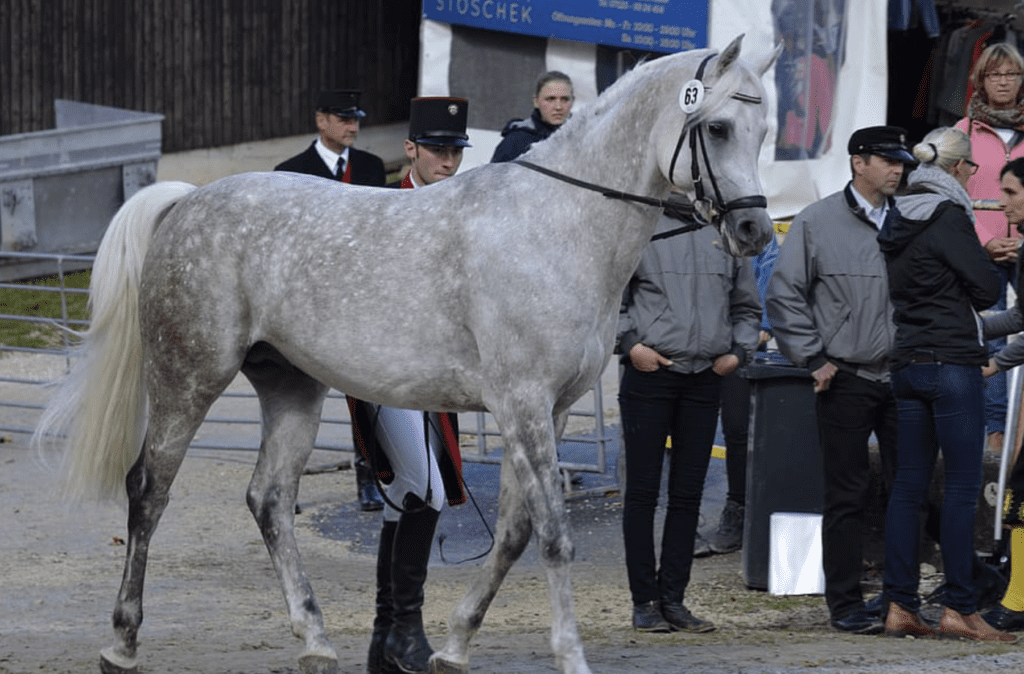
The Arabian is considered one of the oldest horse breeds in the world. It originated in the deserts of the Middle East over 4,000 years ago where harsh conditions and the needs of nomadic tribes shaped the breed. Selective breeding by the Bedouins focused on raising horses with superior stamina, hardiness, and temperament to withstand the extreme temperatures and long distances across desert terrain while remaining loyal to their owners.
Arabian horses tend to be smaller in stature, standing between 14.1 and 15.1 hands high on average and weighing 800 to 1000 pounds. They have distinctive concave facial profiles, large eyes, flared nostrils, and high-set tail carriage. Their refined features, arched necks, and short backs give them a distinctive silhouette. Though smaller than many breeds, Arabians are known for their toughness, endurance, and athleticism.
Today, Arabians are found worldwide and continue to be bred for endurance capabilities. Their gentle nature also makes them a popular riding horse for pleasure and trail riding. They are sometimes seen in horse shows, used for ranch work, and racing. Arabian bloodlines have been infused into many other breeds to lend endurance, refinement of head shape, and athletic ability. The Arabian breed registry is one of the largest in the world, reflecting the longtime popularity of the breed.
Here
- Historical Roots: Arabian horses have a history that dates back an impressive 4,500 years. Archaeological discoveries in the Middle East have uncovered evidence of horses that closely resemble today’s Arabians.
- Origins and Breeding: The Bedouin people of Arabia began breeding Arabians as far back as the 7th century, making them possibly the world’s oldest horse breed.
- Anatomical Uniqueness: Arabian horses have an anatomy that sets them apart, with only 17 ribs instead of the usual 18, and 5 lumbar vertebrae instead of 6. Their square body and high tail carriage add to their unique appearance.
- Temperament and Behavior: Arabians are celebrated for their bold, intelligent, and spirited nature. They are known to be people-friendly and possess a remarkable work ethic.
- Color Variations: Arabian horses can be found in an array of colors, such as bay, chestnut, black, and gray.
- Influence on Other Breeds: Through hybridization, Arabians have played a vital role in refining various other horse breeds, including the Trakehner, English Thoroughbred, American Quarter Horse, and Appaloosa.
- Equestrian Capabilities: Suited for a wide range of equestrian activities, from racing and show jumping to leisurely riding, Arabian horses are admired for their free, flowing gait and exceptional endurance and stamina.
- Myths and Legends: The allure of Arabian horses is also captured in various myths and legends. One such story narrates how Muhammad selected his foundational mares through a test of their bravery and faithfulness.
Quarter Horse
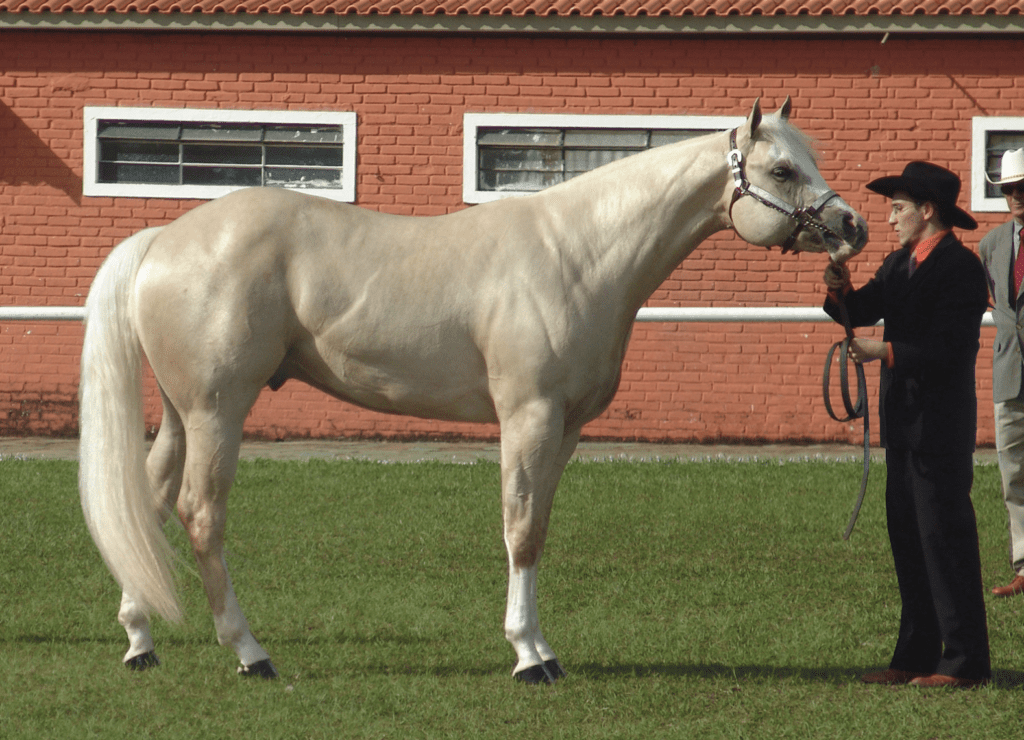
The American Quarter Horse was developed in the 1600s by early American colonists looking to breed a horse ideal for racing a quarter mile or less. Colonial horse racing was an especially popular pastime, and a need arose for an agile horse with tremendous bursts of speed. Quarter Horses were originally bred by crossing English horses with Spanish stock brought over by explorers. This produced a compact yet muscular horse adept at short sprints.
They earned their name from their excellence at racing a quarter mile. Eventually they also gained recognition for their ability to work with cattle, establishing themselves as one of the best cow horses. Today, American Quarter Horses are known for their versatility, good-natured temperament, and as an all-around family horse. They typically stand between 14.2 and 16 hands high and weigh around 1,200 pounds.
In addition to racing and ranch work, they compete in rodeos, horse shows, polo, and a wide range of equestrian disciplines. Their compact build yet innate agility and acceleration make them perfectly suited for events like reining, cutting, barrel racing and other Western events. The American Quarter Horse Association is the largest horse breed registry in the world, indicating their consistent popularity.
Warmbloods

Warmbloods are a group of horse breeds that were developed in Europe by breeding heavy draught horses with lighter, hot-blooded riding horses such as Thoroughbreds, Arabians, and Barbs. This was done beginning in the late 18th century, after the need for heavier cavalry and farm horses declined. By crossbreeding lines, the goal was to create an athletic horse with the power and substance of a draught horse but more refined and suitable for riding.
There are many warmblood breeds such as the Hanoverian, Trakehner, Dutch Warmblood, and Oldenburg. They typically stand over 15.2 hands high, with most between 16 to 17 hands, and can weigh 1,200 pounds or more. Their large frames allow them to be strong jumpers and compete at elite levels of dressage. Warmbloods are known for being intelligent, willing partners that are easily trained.
In addition to show jumping and dressage, they excel at eventing, pleasure riding, and combined driving. Strict breeding selection within warmblood bloodlines ensures that these breeds maintain their athletic talents and good dispositions. The popularity of warmbloods continues to grow as they dominate many equestrian sports.
Draft Horses
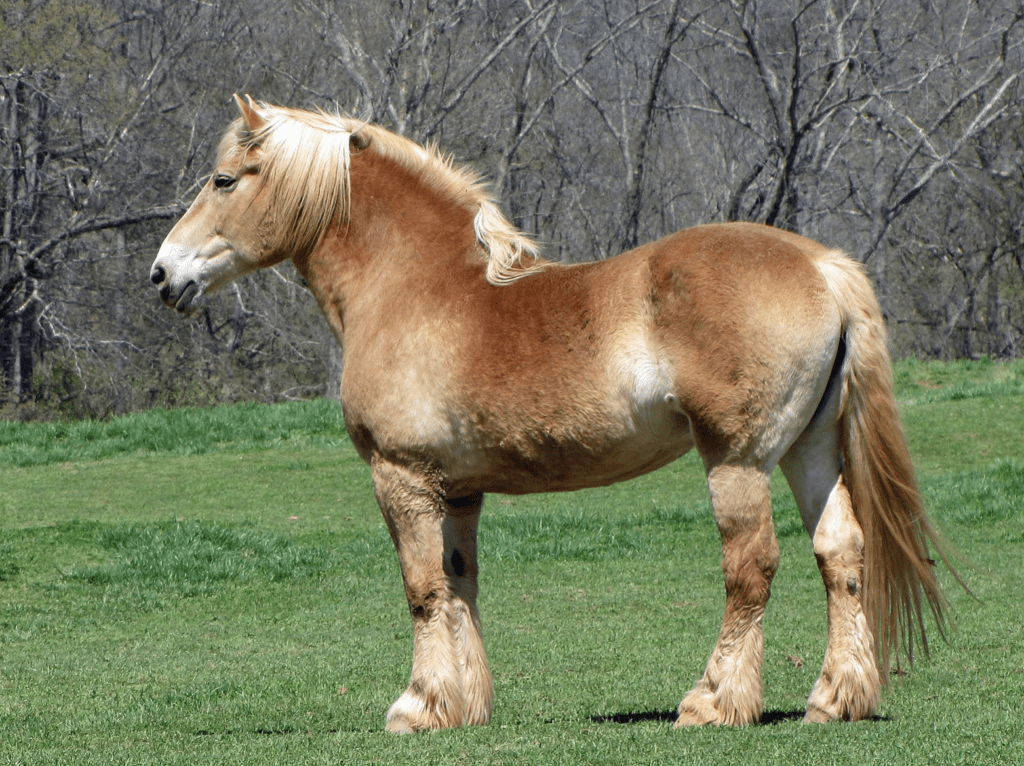
Draft horses are a type of equine bred specifically for farm work, heavy pulling, and harness driving. Their origins trace back thousands of years to horses used to pull carts and plows, but most modern draft breeds were developed in the late 19th century. Notable draft breeds include the Clydesdale, Percheron, Belgian, Shire, and Suffolk Punch.
Drafts have a very heavy, muscular build designed for immense pulling power. They typically stand over 16 hands high and can weigh between 1,800 to over 2,000 pounds. Their sturdy frames, strong hooves, and gentle temperaments made them ideal for life as a working farm horse before the mechanization of agriculture. Many draft breeds are recognized by their significant feathering on the lower legs.
In addition to their original use for pulling heavy loads, today draft horses are shown in hitch competitions, used for driving, and some are ridden under saddle. Clydesdales and Percherons are also seen in cities doing harness and carriage work. Though not used as widely for farm labor, draft breeds remain popular for their gentle giant nature and sheer power.
Genetics and Breeding
Percentage of resident horses as of May 1, 2015, by breed and by region
| Percent | Horses | Region | ||||||
|---|---|---|---|---|---|---|---|---|
| West South Central | Northeast | Southeast | All operations | |||||
| Breed | Pct. | Std. error | Pct. | Std. error | Pct. | Std. error | Pct. | Std. error |
| Appaloosa | 1.8 | (0.4) | 1.6 | (0.4) | 2.5 | (0.4) | 2.0 | (0.5) |
| Arabian | 4.2 | (0.8) | 2.3 | (0.6) | 3.9 | (0.8) | 5.9 | (2.2) |
| Draft | 2.2 | (0.6) | 1.1 | (0.3) | 15.2 | (1.5) | 2.5 | (0.6) |
| Miniature horse | 2.3 | (0.6) | 5.0 | (1.1) | 6.3 | (0.9) | 7.1 | (1.3) |
| Morgan | 1.5 | (0.5) | 1.0 | (0.5) | 2.9 | (0.5) | 0.6 | (0.2) |
| Mustang | 2.0 | (0.5) | 1.1 | (0.5) | 0.5 | (0.1) | 0.4 | (0.1) |
| Paint | 7.4 | (0.8) | 8.0 | (1.1) | 6.4 | (0.7) | 4.8 | (0.7) |
| Quarter horse | 55.5 | (2.8) | 61.8 | (3.1) | 21.7 | (1.8) | 21.4 | (1.7) |
| Saddlebred | 0.9 | (0.4) | 2.8 | (0.7) | 1.8 | (0.4) | 4.3 | (1.2) |
| Standardbred | 1.1 | (0.6) | 1.4 | (0.5) | 10.7 | (1.5) | 2.9 | (0.8) |
| Tennessee Walker | 1.1 | (0.3) | 0.7 | (0.2) | 2.1 | (0.4) | 15.1 | (1.7) |
| Thoroughbred | 4.2 | (1.1) | 2.4 | (0.8) | 10.1 | (1.6) | 13.7 | (2.4) |
| Warmblood | 2.1 | (0.5) | 1.6 | (0.6) | 5.2 | (0.7) | 4.4 | (0.8) |
| Grade | 4.5 | (1.3) | 5.1 | (1.7) | 4.0 | (0.6) | 2.5 | (0.5) |
| Other | 9.3 | (2.0) | 4.2 | (0.9) | 6.7 | (1.0) | 12.3 | (1.9) |
The huge variety of equine breeds is made possible by the remarkable genetic diversity of horses. Unlike some other domesticated animals, horses have never undergone any serious “genetic bottleneck” events that limit diversity. However, responsible breeding is essential for maintaining health and genetic diversity within breeds. Here’s a primer on equine genetics and breeding:
- Equine genetics basics – Horses have 64 chromosomes and dominant/recessive genes influencing coat color, size, gait, temperament, etc. Some genes linked to health risks are common in certain breeds.
- Breeding principles – Selective breeding over many generations concentrates specific genes to develop “breed standards.” Breeding closely related horses increases risk of genetic disease.
- Modern breeding technologies – Artificial insemination, embryo transfers, genetic testing help produce offspring from prime specimens. DNA tests identify some genetic diseases.
- Ethical considerations – Breeding solely for appearance or profit can lead to health/temperament issues. Responsible breeders balance economics with ethics for long-term breed welfare.
- Impact on health – Some breeds prone to certain illnesses, like obesity in Easy Keepers and navicular disease in Quarter Horses. Responsible breeding minimizes risks.
Thoughtful, ethical breeding enables horse breeds to thrive and evolve to meet changing needs while minimizing risks of genetic disease. Next, let’s go over proper care and handling practices tailored to different types of horse breeds.
Care and Maintenance
While all horses require quality feed, grooming, hoof care and veterinary care, breeds have slightly different needs:
- Dietary needs – Hard keepers like Thoroughbreds require more calories while Easy Keepers like Morgans need less nutrient-dense feed to avoid obesity. Some breeds prone to metabolic disorders.
- Grooming – Short-haired breeds like Appaloosas need less grooming than longer-haired breeds like Friesians and Gypsy Horses which require extensive brushing and mane/tail care.
- Health check-ups – Draft breeds should be screened for genetic disorders like polysaccharide storage myopathy. Gaited horses can develop spine/joint issues if not ridden correctly.
- Vaccinations – Beyond core shots, horses in certain regions may need additional vaccines. Breeding stock requires specialized vaccines to minimize infection risk.
- Pregnancy care – Broodmares have increased nutritional needs in late gestation and require calm handling to minimize stress during pregnancy. Newborn foals require meticulous care.
- Senior horse care – Special feeding, turnout, exercise and dental care help senior horses 15+ years old thrive despite age-related health issues.
Understanding breed-specific care needs, as well as your individual horse’s health history and condition, enables you to provide customized, compassionate care for your equine companion. Next, let’s discuss training and riding considerations.
Training and Riding
Horse training techniques must account for differences in breed traits and purposes:
- Training philosophy – Excitable breeds like Thoroughbreds respond better to gentle training while stubborn breeds like Haflingers may require more firm handling. Gaited horses need specialized training to smooth out their gaits.
- Discipline-specialized training – Certain breeds need tailored training for their intended discipline like dressage or reining. Jumping training is not advised for heavier, unsuitable breeds.
- Rider safety – Beginner riders should learn on calmer breeds before handling more challenging breeds like Arabians or Mustangs known for spiritedness.
- Gear and equipment – Larger riders need stronger saddles to safely fit draft horse builds. Specialized shoes, bits and saddles enable optimal performance for discipline and breed traits.
- Competition/show training – Showing requires meticulous breed-specific training on presentation, gaits and manners. Certain breeds better suited for dressage, jumping, cutting, reining, etc based on inherited abilities.
Thoughtful training tailored to breed traits and abilities allows horses to progress confidently in their education and prepares them for success in any equine discipline or working role. Next, let’s go in-depth on a few specialized horse breeds.
Specialized Breeds
Let’s explore a few fascinating niche horse breeds from around the world:
- Bashkir Curly – This unique breed originating in Russia has a curly winter coat unsuitable for showing but provides excellent insulation in frigid climates. Their curly hair is caused by a dominant gene variant.
- Chincoteague Pony – Adapted to the coastal barrier islands off the Atlantic coast, this rugged feral breed is smaller in stature but able to thrive on limited forage. Descended from colonial Spanish horses.
- Sable Island Horse – This small, shaggy-haired breed derived from shipwrecked horses abandoned on a remote Canadian island. After decades of feral breeding, they became perfectly adapted to the harsh environment.
- Pottok – One of the oldest breeds that still exists today, these small but sturdy Basque mountain horses originated in the Pyrenees mountains between France and Spain. Known for surefootedness.
- Florida Cracker Horse – Descended from colonial Spanish Barb horses, this hardy, heat-tolerant breed played a pivotal role in the development of cowboy traditions and cattle herding in Florida.
Preserving rare and specialized breeds keeps these unique equine genetics alive for future generations. When choosing a breed, be sure to select an appropriate match for your climate, lifestyle, and equestrian discipline. Next, let’s go over factors to weigh when buying or selling horses.
Buying and Selling Horse Breeds
Whether buying or selling, it’s critical to make responsible choices when transferring horse ownership:
- Buying considerations – Determine intended purpose, ideal breed and temperament, your skill level, facilities and budget. Vetting exams and trial periods reduce risk.
- Breed registries and paperwork – Reputable breeders will provide documentation on pedigree, breed registration, health and vaccines. Certain registries prohibit crossbred horses.
- Pricing factors – Age, training, pedigree, breed demand, discipline specialties and show record determine pricing ranging from $500 for untrained mixed breeds to over $1 million for elite show horses and stud fees.
- Legal contracts – Purchase exams, liability releases, boarding agreements, sale contingencies, and other contracts protect interests of both buyer and seller.
- Selling tips – Honesty on disclosing medical history, training gaps, and behavior issues is mandated. Patience ensures good fit between horse and new owner. Advertising on niche sites expands reach.
Doing your homework on breeds, sourcing, paperwork, legalities, pricing and ethics reduces headaches when buying or selling horses. Ultimately, matching rider to horse should prioritize welfare over economics.
Conclusion
Horse breeds represent centuries of history and horsemanship that molded equines into every shape and size imaginable. From dainty Arabians to massive Shires, fiery racehorses to steady cart ponies, horses display an astonishing range of diversity. Yet throughout all breeds, the horse’s intelligence, sensitivity, and willingness to partner with humans shines through.
With over 300 breeds worldwide, it can take years to fully understand the nuances of different breed histories, physical attributes, care needs, temperamental traits and specialized uses. Yet exploring the rich diversity across equine breeds provides endless fascination for all who love horses. We must support responsible breeding, training, and ownership practices to ensure the preservation of these majestic, varied breeds for generations to come. What an equine breed most needs is an advocate and partner – you!
Appendix
Glossary of Equine Terms
- Dam – The mother of a horse
- Sire – The father of a horse
- Hand – A unit of measurement equal to 4 inches used to measure horse height
- Withers – The highest point of a horse’s shoulder, used to measure height
- Colt – Male horse under age 4
- Filly – Female horse under age 4
- Mare – Adult female horse
- Stallion – Adult male horse
- Gelding – Castrated male horse
- Foal – Baby horse under one year
- Yearling – Young horse between one and two years old
- Farrier – Horseshoer who trims and fits horseshoes
